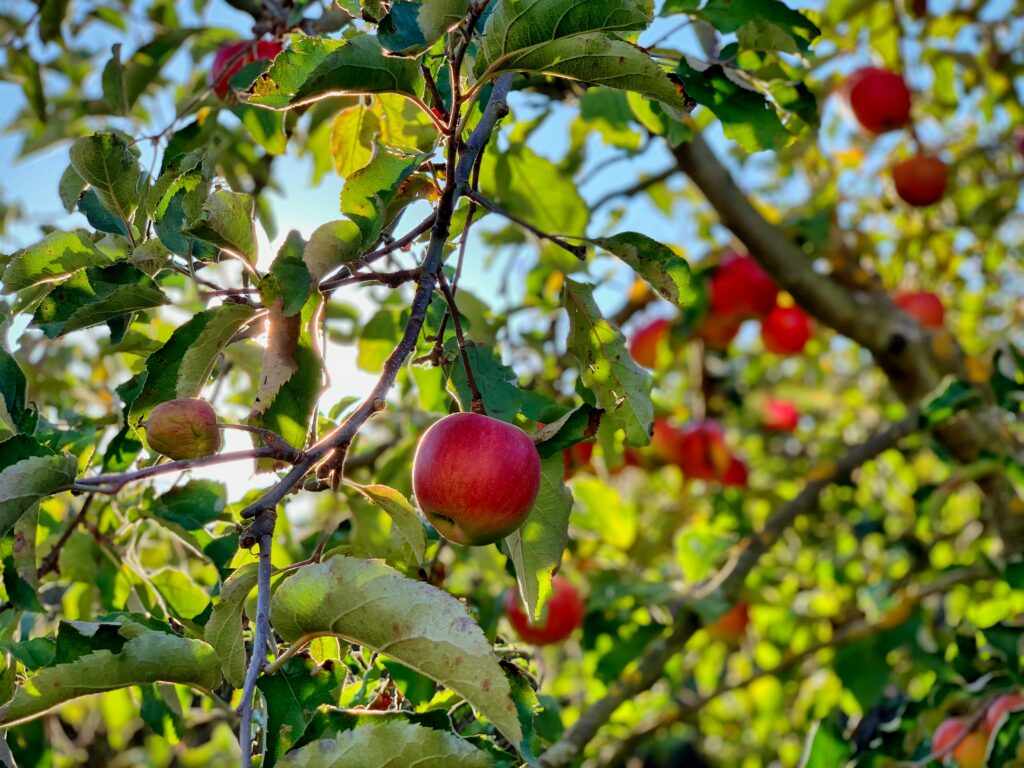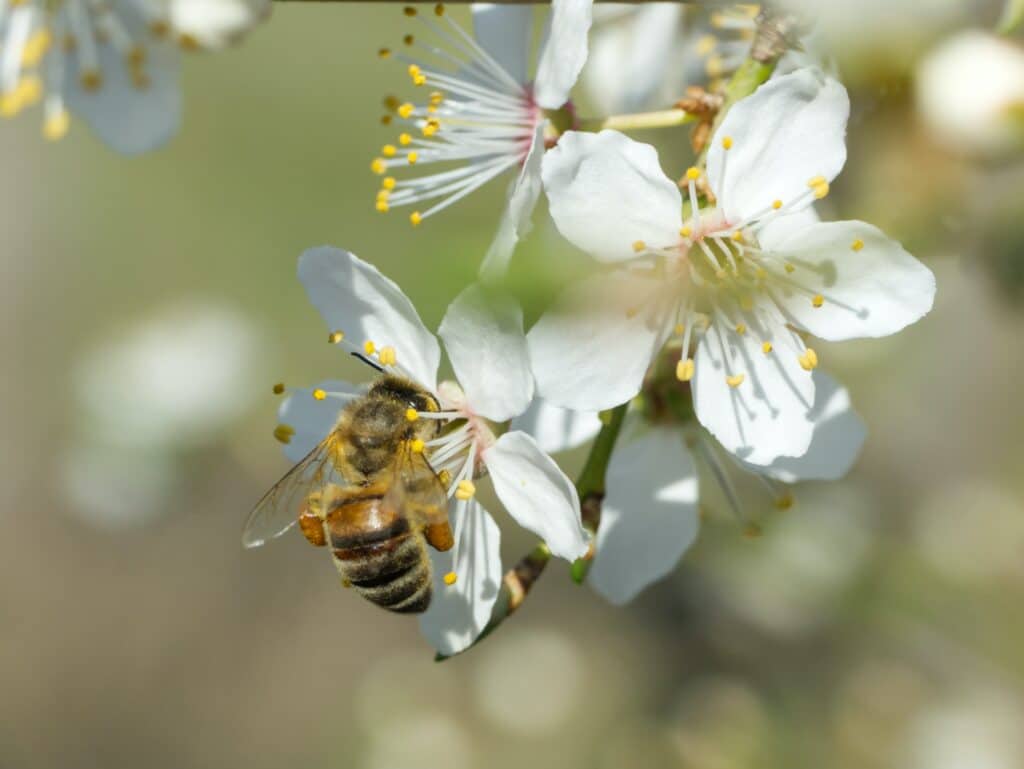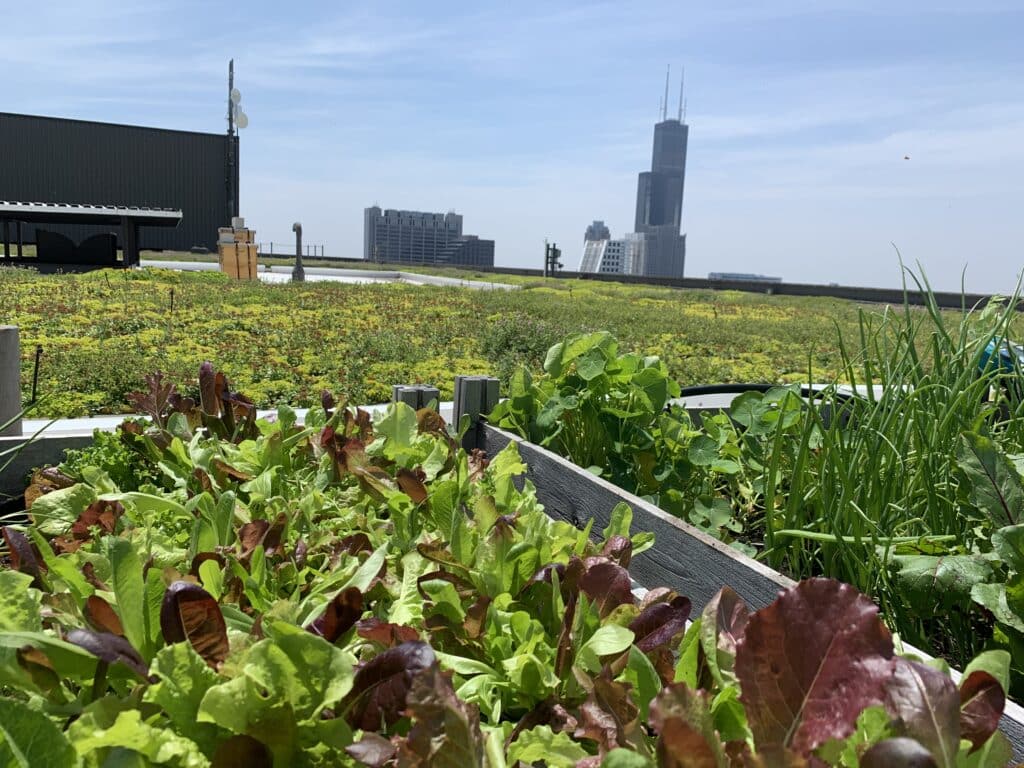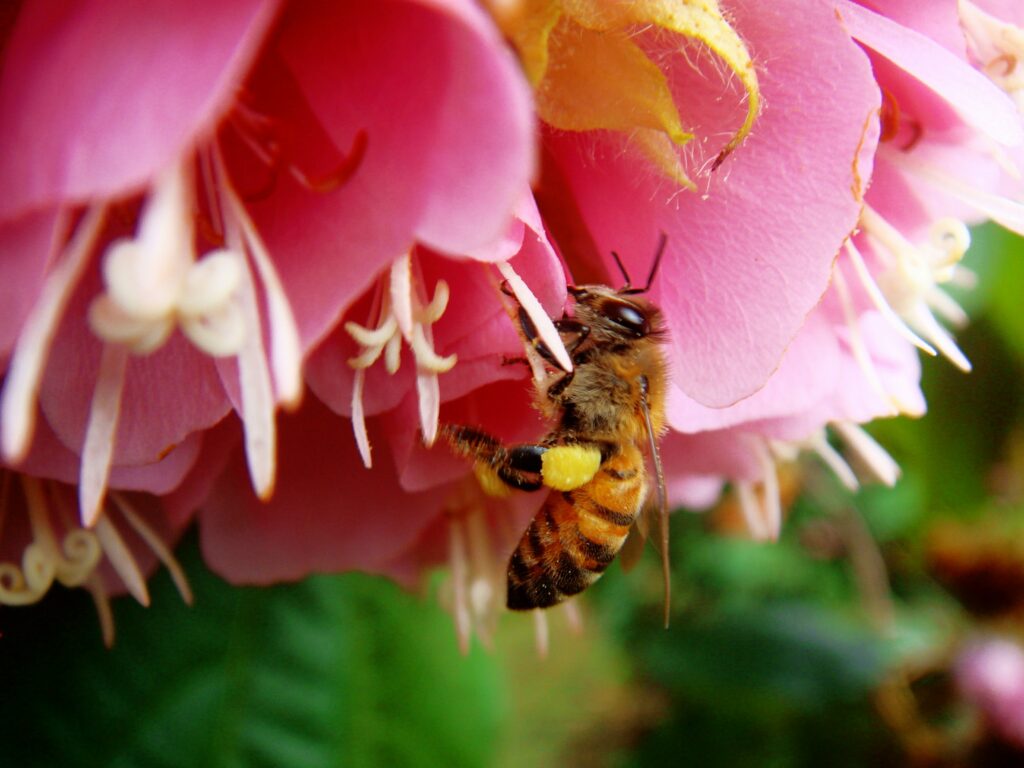Contents:
- Are bees in danger?
- Why are bees important?
- 17 Ways to Save the Bees
- History of the Save the Bees Movement
- What factors are impacting bees and pollinators?
- FAQs
Are bees in danger?

It might be hard to believe, given the sheer number of insects on the planet, but all pollinators, bees included, are in danger. Here in the U.S., while only a few species face imminent extinction, populations of native bees and honey bees are in decline. More than 40% of all honey bee colonies perish every winter and were it not for the hard work of beekeepers and bee breeders, in just a few short years, there wouldn’t be enough honey bees left to pollinate vital crops.
Why are bees important?

Bees are the primary pollinators of many of the world’s flowering plants; without them, the plants could not reproduce. Taking flowering trees and plants out of our ecosystem would have unimaginable consequences—they are woven into the web of life on our planet.
Much of the global food supply depends on the pollination activity of bees. If we did not have bees, our food supply—especially nutrient rich fruits, nuts and vegetables—would be drastically reduced. 70% of our food system is dependent on pollinators, and an estimated 80% of pollination is done by honey bees.
The loss of flowering plants would be devastating not only on our ecosystem and food supply, it would damage our economy. Farmers that raise fruit, nut and vegetable crops would be out of business, and with them, the communities that depend on them. Companies that produce food products made from flowering plants would shut down, and with them millions of jobs. An EarthDay.Org report valued bee-pollinated crops worldwide to be worth $577 billion annually.
Without honey bees, there would be no honey, a natural and sustainable sweetener. Honey has many health benefits as well, including strengthening immune systems, nourishing skin, acting as an antioxidant, cough remedy, energy booster, and sleep aid.
17 Ways to Save the Bees
1. Landscape with pollinator-friendly plants.
Whatever the size of your outdoor space—whether you have acres of gardens or just a window box or two, consider landscaping with pollinator friendly plants. Surprisingly, many common trees, shrubs and garden plants are either wind pollinated, such as maples, pines, and ornamental grasses, or have double flowers that are so full of petals most bees can’t access their nectar and pollen, such as roses and peonies. Replacing them with pollinator friendly plants, especially native species, is easy and will provide much needed forage for bees. This website can help you choose plants suited for your region https://xerces.org/pollinator-conservation/pollinator-friendly-plant-lists.
2. Stop using pesticides and herbicides.
Poisonous chemicals used to protect gardens and crops from insects and weeds are one of the leading factors in pollinator loss. If you can, cut back their use entirely. If you can’t, consider using fewer toxic chemicals and natural remedies. You can find alternatives to harsh poisons here: https://healthfully.com/226714-alternatives-to-herbicides-pesticides.html.
3. Protect important habitats.
Roadside verges, weedy lots, old fields, marshy areas—these might seem unkempt to us, but in our rush to make them tidy and productive, we risk destroying important wild habitat that is an important source of forage for pollinators, especially native bees. Instead of landscaping your whole property, leave some of it wild. Write to municipal authorities asking that they do the same. Where wild lands are endangered by development, advocate for their protection, and ask zoning boards to require developers to leave a portion of their property in a wild state.
4. Remove swarms responsibly.
Bee swarming is a natural event that occurs in late spring or early summer when a colony has outgrown its home. If you see a cloud of bees in the air or clustering on a pole or tree, you’re not in danger—the swarm will not attack you, and if you stay 20 feet away or more, you’ll be in no danger of bee stings. Do not try to drive them away with insecticide, as you’ll kill the swarming hive; instead call a local beekeeper to remove it. Our website provides helpful information on honey bee swarms: https://bestbees.com/bee-swarms.
5. Advocate for pollinator friendly legislation.
Taking action on climate change, banning pesticide & herbicide use, protecting endangered habitat, supporting regenerative agriculture—these all require action at the municipal, state and federal level. Write, text and call your representatives and tell them you want them to support pollinator friendly legislation. The Pollinator Friendly Alliance is a great place to start: https://www.pollinatorfriendly.org/advocacy.
6. Support local beekeepers.
Local beekeepers are essential to honey bee survival. Without them, we’d be left with only industrial beekeeping, which serves agribusinesses. You can find a local beekeeping association at the American Beekeeping Federation website https://www.abfnet.org/page/states
7. Add a pollinator garden to your rooftop.
No ground level outdoor space? Add a pollinator garden to your balcony, deck or rooftop; even a small space will help. Bees will fly hundreds of feet up to find forage, so roofs and balconies are great places to put pollinator gardens. Herbs and fruiting vegetables, such as tomatoes, cucumbers and squashes, are great for bees, and will provide you with fresh produce!
8. Plant flowering trees.
Unless you live deep in the woods, there’s a good chance your property has room for a flowering tree or two. This website can help you pick trees that are right for your property: https://www.arborday.org/trees/health/pests/article-trees-for-bees.cfm.
9. Practice pollinator-friendly lawn care.
Make your first cut later in the year—this will give bees access to low-growing, early flowering plants such as dandelions. Stop using herbicides–they kill clover, which is a valuable summer-long forage source for bees. Cut your lawn higher and less often—this will allow low growing plants like dandelions and clover to bloom for a few days each week. Avoid using grub controls, or use them sparingly in the evening, watering immediately after application to soak them in and clean your lawn surface of poison.
10. Keep honey bees.
With overwintering losses of 40-50% each year in most regions of the country, we need more honey bees. Keeping bees on your property will help the environment, give you hours of enjoyment watching them, and in bountiful years provide you with your own delicious honey! Contact your local beekeeping association to learn more about how to keep bees or contact our sales staff to learn about our professional managed beekeeping services.
11. Provide homes for native bees.
Native bees are in danger as well and providing homes for them is a simple and inexpensive way to help. This Smithsonian webinar has lost of helpful advice on how you can create homes for native bees: https://gardens.si.edu/learn/lets-talk-gardens-video-library/making-homes-for-native-bees-a-chat-with-dr-holly-walker.
12. Set up and keep a bee bath filled with fresh water.
We see bees buzzing through our gardens, but forget that they, like all animals, need water to survive. While they will fly up to 2-3 miles to find water, a nearby, reliable source is a much better alternative. If you don’t have a pond or stream on your property, put out a dish of water in your garden for visiting bees. Monitor it frequently, and if not refreshed with rainwater, add your own—bottled water is better than tap. Learn more about how to make a bee bath at this website: https://gardentherapy.ca/bee-bath.
13. Support regenerative agriculture & rewilding projects.
There’s a growing movement among ecologically conscious farmers to return to traditional, more sustainable approaches to agriculture that enrich, rather than deplete soil. These include practices such as crop diversity, crop rotation, the use of natural fertilizers and pest controls, and “rewilding”, where a portion of farms are returned to hedgerows and uncut verges, providing habitat for a host of animals, and natural forage for pollinators. If not farming yourself, you can support the movement by purchasing from farmers who are reimplementing these good practices. You can learn more about regenerative agriculture and rewilding at these websites: https://earthhavenlearning.ca/restorative-agriculture https://rewilding.org/what-is-rewilding.
14. Shop responsibly.
As much as possible, purchase certified organic products, as these are raised using pollinator-friendly methods, and when you can, support local growers, as they will have a direct impact on the health of your local environment. Want to help bees, beekeepers and your local green farming community? Purchase local honey—you can find sources here http://localhoneyfinder.org.
15. Donate to a bee conservation program/host a fundraiser for pollinators.
Building public awareness, advocating for new legislation, supporting research and habitat protection—these all take money. One important way to help is to make a donation, or host a fundraiser, for a respected bee conservation organization. The Bee Conservancy is one of the preeminent organizations in the U.S. You can learn about their work and make a donation here: https://thebeeconservancy.org.
16. Continuing to educate yourself on bees and pollinators.
The more we all know about bees and other pollinators, the better decisions we can make about how best to help them. At Best Bees, we’ve been writing about bee health for over 10 years. You can find a wealth of information, including blogs, white papers, webinars & videos under the Resources tab on our website https://bestbees.com/
17. Become a Citizen Scientist.
While pollinators are in grave danger, we can take heart that scientists worldwide are investigating the many problems they face and are finding new solutions—from more effective pathogen treatments to smart hives to disease resistant strains of bees—that will save the bees. You can help by becoming a citizen scientist. The data you collect and share with scientific organizations can make a real difference. Here’s what you can do:
- Post data on your bees to Citizen Science programs like:
- Submit your honey for HoneyDNA results – these will be shared with our nonprofit partner The Urban Beekeeping Lab
History of the Save the Bees Movement

Most people were unaware of the plight of bees until the discovery of Colony Collapse Disorder (CCD) in 2006. CCD was a new and tragic phenomenon where worker bees in the thousands deserted their hives, leaving the queen and her remaining workers to die. Colony mortality soared, and the ensuing press about the issue was a wake-up call to the world. A clarion call went out from scientists, beekeepers, farmers and ecologists to “Save the bees!”
The threat of CCD has largely passed, but the impetus to save bees, thankfully continues. No single reason for CCD has ever been discovered, but the underlying problems that likely combined to create it are not only still with us, but growing. On average, we lose more than 40% of hives in the U.S. each year.
The possibility of catastrophic honey bee loss also brought attention to the plight of all pollinators, especially native bees. While native bees have experienced nothing like CCD, they’ve been in steady decline for years, and several species are now endangered. The call to “save the bees” now includes saving all bees—natives species and honey bees alike.
What factors are impacting bees and pollinators?

A number of factors negatively impact bees and other pollinators, including climate change, habitat loss, environmental degradation, the still widespread use of pesticides and herbicides, and with global trade, the introduction of non-native pathogens, such as viruses, mites and other parasites. Poisons and pathogens are the most immediately damaging. When they don’t kill bees outright, poisons such as pesticides and herbicides can weaken them, making it difficult for them to forage, and increasing the likelihood that pathogens will finish them off. Pathogens such as varroa mites are especially dangerous for honey bees, as they enter hives and breed there, feeding on brood until the colony cannot sustain itself.
Additionally, climate change is producing erratic and extreme weather conditions which damage hives, reduce forage, and make it harder for beekeepers to tend hives. Habitat loss not only reduces the amount of forage available, but the diversity of flowers available. A variety of flowering trees and plants is essential to most bees, as they gain vital nutrients from different species. Environmental degradation, through air and water pollution, can weaken bees as well.
Without human intervention, climate change, habitat loss and environmental degradation are expected to get progressively worse in years to come.
FAQs
Q: Are bees in danger?
A: Yes! While Colony Collapse disorder has abated, honey bees and native bees are still dying in unprecedented numbers. More than 40% of honey bee hives are lost each year. Most native bee species are in decline, and four are on the verge of extinction.
Q:Why should we save the bees?
A: Our ecosystem, food supply and economy depend on them. Without pollinators flowering plants could not reproduce. There would be virtually no fruits, nuts and vegetables. 70% of the world’s food supply would disappear. We would lose almost $600 billion in agricultural products.
Q: What factors are impacting bees and other pollinators?
A: The primary factors negatively impacting pollinators are climate change, habitat loss, environmental degradation, pesticide and herbicide use and the introduction of pathogens such as viruses and mites.
Q: How can I save the bees?
A:There are many things that we can each do—as individuals and organizations—to save the bees. This includes practicing organic gardening at home, planting bee-friendly flowers and shrubs, saying no to pesticides, and making your own “wild bee” houses.




